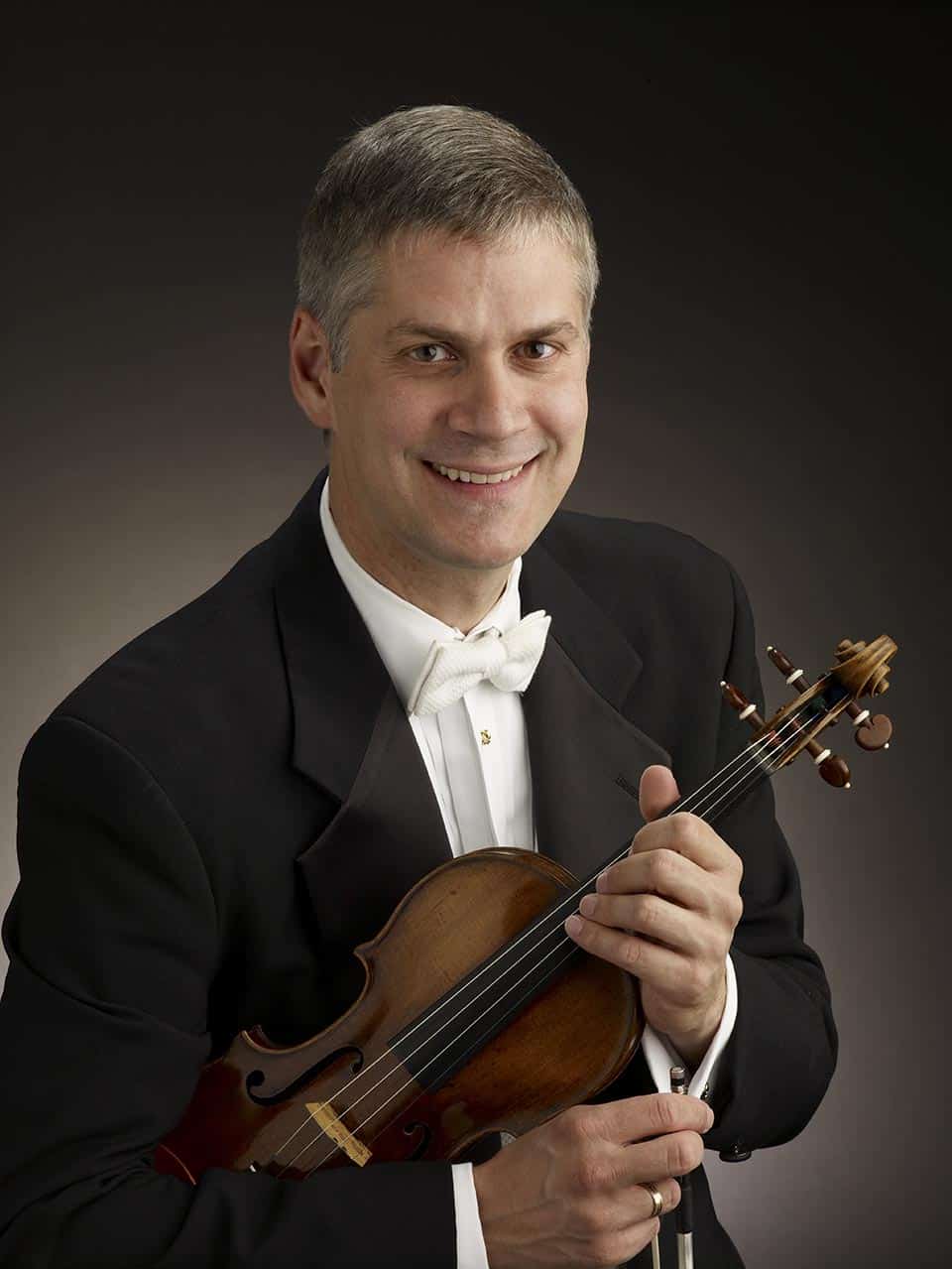Leading opera stars line up to perform Shakespeare’s King Lear
mainMichael Chance’s Grange Festival in Hampshire has just announced it is putting on King Lear next summer with an all-star opera cast:
Sir John Tomlinson will play Lear, with Sir Thomas Allen as Gloucester.
Others in the cast are: Kim Begley (Fool), Peter Coleman Wright (Kent), Susan Bullock (Goneril), Louise Alder (Cordelia), Emma Bell (Regan), Richard Berkeley Steele, Darren Clarke, Christopher Gillett, Henry Waddington, John Graham Hall and Oskar McCarthy.
The Wagnerian Keith Warner directs. Michael Hunt is the producer who came up with the idea.
Michael Chance writes: ‘What can singers, these singers, bring uniquely to Shakespearean verse? An obvious first claim is rhythm, quite apart from vocal resonance and dramatic instinct. It should never be forgotten that all singers’ operatic music is a response to words and their multiple layers of meaning. This production promises to bring fundamental dramatic truths to the fore in surprising and transformative ways.’






I’d love to see J T as Lear! Another reason not to shave his beard and to grow his hair even longer!
Thank you for your support Norman. I must be clear that I didn’t in fact come up with the idea. This has been driven by the artists, especially Kim Begley, John Tomlinson and Keith. My role has simply been to try and bring the idea to life. Much thanks must go to Michael Chance who immediately saw the possibilities of such an idea.
This should be interesting. I hope it receives fair reviews, untainted by lazy prejudices against opera singers (this being the UK).
Kim Begley as the Fool should be great, I have long thought him a hugely under-rated singer and actor (despite his long, impressive career)
Some music inspired by King Lear.
The symphonic poem König Lear op. 20 was Felix Weingartner’s first large orchestral work, composed in 1895 while serving as court music director in Berlin. It was premiered by Dr Franz Wüllner, the director of the Gürzenich Orchestra in Cologne and for a time enjoyed a respectable success with the public and the press. King Lear exhibits the musical influence of his teacher Liszt. Already the title itelf, symphonic poem represents a homage to Liszt.
For his part, however Weingartner did not want his King Lear to be understood as programme music. He selected a very traditional form for it, namely the sonata form movement with introduction, first and second subjects, development section and recapitulation so that it rather more recalls an overture. In addition, King Lear was not supposed to depict any action at all but merely to arouse feelings and images in the listener.
Weingartner wrote an introduction to the work:
“The introduction (Allegro molto) shows us the king in the fulness of his might and grandeur. A particularly intricate them characterising the intrigues and hypocrisies of his court is forced back and in a way dominated by the main theme, which now appears in the horns and cannot come to full development. The “idea of love” hovers over everything but it appears misunderstood and lonely, in the gloomy key of C minor and in rhythm and instrumentation, in the sharpest contrast to the other things.
The main theme in radiant C major shows us once again the mighty personality of the king in his full glory. In the main part (Allegro) now beginning, the second theme appears first in its genuine form and gains importance in its fugued elaboration. Like a bright light Cordelia’s dear figure steps into the growing confusion. Now she can speak out purely the idea of love. She appears in a bright E flat major without darkening tones. But the king does not understand her. The main theme (violoncellos and double basses) mixes in resentfully, accompanied by fragments of the fourth theme (flutes, in tones of the noblest emotion). The idea of love seems once again to come to the fore (oboe), but uncannily rising thematic bass scales cut off its word.
The king’s anger grows mightily. His main theme (bass trumpet and horns) and the idea of love (violins and flutes) stand over against each other as if for an annihilating battle, while figurations formed from the fourth theme, coil around like snakes. Finally the trombones take hold of the main theme in fortissimo and E flat minor. Lear announces the banning of his dearest child. But his soul is torn.
A short pizzicato and a quiet tamtam beat announce the imminent occurrence of a horrible event. All the themes occur together in the violent battle. In the end all that is left of the fourth theme is its rhythm, which virtually bores into the soul amid always recurring, intensifying repetition of the same interval. Cordelia’s melody is strangely transformed. In the end it only still continues to appear in progressions of whole tones, which lends it a glaring, rigid character.
The rain pours down, the storm rages over the heath, lightening flashes and thunder rolls. Ravens fly shrieking over the sky. For the characterisation of the corresponding mood, percussion instruments (cymbal and bass drum) otherwise are not employed in the whole of the piece are added here. A grotesque caricature of the main theme indicates the terrible catastrophe. Lear has become mad. The theme of the idea of love sounds repeatedly for the unhappy king into his mental obsession. This finally takes on a firmer shape. A march like movement formed from themes three and six is heard. In this case the listener’s imagination evokes , the French army led by Cordelia.
Cordelia and Lear have met again. In place of the recapitulation of the first part usually heard in the overture, the theme of Cordelia is heard in jubilant, victorious transfiguration and hereupon the idea of love is united with the main theme, the latter, however no longer in contrast to the idea of love but nestled against it in rhythm as it were surrounded by it. An abrupt beat brings the happiness, only barely attained to the end. Cordelia’s theme again appears mournfully (clarinet solo) and a short repetition of the introductory measures in the end the main theme is played by four timpani in pianissimo leads to the tragic conclusion”.
Felix Weingartner
Symphonic poem König Lear op. 20
Sinfonieorchester Basel
Marko Letonja
https://www.youtube.com/watch?v=m4hc-afF50s
Garech, I have all Weingartner’s symphonies, he did 7 the last being choral with settings of two poems written by his fifth wife Carmen Studer.
“Weingartner did not want his King Lear to be understood as programme music.” Right…
That’s what it said in the blurb in the CD case insert, it goes for 14 pages! The translation of the text may have gone off! LOL. You have not said whether you like it or not. It is miles better than the shite composed today.
By the time of this intriguing production, I may have recovered from Laurence Olivier’s, one of his last. When he enters bearing the lifeless Cordelia. after uttering his despair at never seeing her again, never hearing her voice, comes the line Eliot called the greatest in English erse: “Never, never, never, never, never”,
Olivier’s Lear was indeed one for the ages, Edgar.
That production was shown on telly here in the USA at around the time it was made, and even in my younger days (it must have been like 40 years ago), I knew it was something quite special.
I began a thread here a while back with the premise that one appreciates the music of Brahms more as one gets older. The same is true with this particular play by Shakespeare, possibly his greatest work.
Excellent idea. Excellent cast, too. There are some serious fine actors in that line-up.
And some dodgy music, alas.
Will it be recorded? Anyone know?
When Shakespeare put on his play King Lear, the Globe Theatre was often shut on and off and the whole country was in lockdown with recurrent plague outbreaks.
In those days they knew nothing about disease transmission and how Yersina pestis the cause of bubonic plague was spread by rat fleas.
Hear about life in county Leitrim by the well known commentator on rural affairs, Mossy Flood.
https://www.youtube.com/watch?v=E1nfw6Wspls
Excellent cast for a revival of the play/film Quartet !
Tis the time’s plague when madmen lead the blind. Gloucester, King Lear Act IV scene I.
Pestilence was rife in Shakespeare’s time, closing theatres and ravaging life. Did he write his bleak, desperate drama King Lear while self-isolating? Consider the evidence.
While those of us stuck in self-isolation or working from home watch you tube videos and refresh liveblogs, a meme has been going around that claims Shakespeare made use of being quarantined during the plague to write King Lear. The Bard supposedly took advantage of the Globe’s lengthy closure to get on top of his writing in-tray – coming up with Macbeth and Antony and Cleopatra to boot. If you weren’t panicky enough about how little you’ve achieved recently, this is surely a way to feel worse. Why aren’t you finally dusting off that novel or screenplay you’ve been itching to write? It’s what the Bard would do, surely.
Yet, is it actually true, the bit about Shakespeare? Well, maybe. Certainly it’s fair to say that, like all Elizabethans, the playwright’s career was affected by the bubonic plague in ways that are all but impossible to conceive now, even in the midst of Covid-19. As an infant, he was lucky to survive the disease: Stratford-upon-Avon was ravaged by a huge outbreak in the summer of 1564, a few months after he was born, and up to a quarter of the town’s population died. Growing up, Shakespeare would have heard endless stories about this apocalyptic event and kneeled in church in solemn remembrance of townsfolk who were lost. His father, John, was closely involved in relief efforts and attended a meeting to help Stratford’s poorest. It was held outdoors because of the risk.
When Shakespeare became a professional actor, then a playwright and shareholder in a London company, plague presented both a professional and existential threat. Elizabethan doctors had no inkling that the disease was caused by the bacterium Yersina pestis (first described and cultured by Alexandre Yersin in Hong Kong in 1894, after which transmission of bacteria from rodents by flea bites was discovered by Jean-Paul Simond in 1898), nor that is was transmitted by rat fleas, and the moment an outbreak flared up – often during the spring or summer months, peak seasons for theatres – the authorities scrabbled to ban mass gatherings.
Given that the authorities were naturally suspicious of theatre anyway, as being an incitement to lewdness and cross-dressing and God knows what else, playhouses were invariably the first to close. (Brothels and bear-baiting arenas, too, which some theatre owners relied on for income.) As a preacher of the time flatly put it: “The cause of plagues is sin, and the cause of sin is plays.”
Between 1603 and 1613, when Shakespeare’s powers as a writer were at their height, the Globe and other London playhouses were shut for an astonishing total of 78 months – more than 60% of the time.
These were dark periods for theatres in more senses than one. Actors were forced into other work and, of course, many died (people aged between 10 and their mid-30s were especially vulnerable). Companies broke up or were forced to tour in the provinces, hoping that news of the pestilence didn’t travel ahead of them. As at least one Shakespeare biographer has pointed out, there was a curious irony to the closures: Elizabethan theatregoers loved to snack on hazelnuts, which may have helped repel plague-carrying fleas.
So how about the Lear theory? Not by any means impossible: we know the play was acted in front of King James I on St Stephen’s Day 1606, the first performance on record, and it’s a decent bet that it was scripted that year or the year before. As the theatre historian James Shapiro points out, there was a major plague event in London in summer 1606, which led to the Globe and all other London theatres being closed. The outbreak wasn’t as bad as the one three years before that killed more than a 10th of London’s population, but it raged through the summer and early autumn, and the City of London parish where Shakespeare lived was one of those affected. Indeed, the playwright’s very house was touched: one of those who died that year was his landlady, Marie Mountjoy.
When you know this, it’s hard not to hear the echoes in Lear, arguably the bleakest tragedy Shakespeare wrote. The mood in the city must have been ghastly – deserted streets and closed shops, dogs running free, carers carrying three-foot staffs painted red so everyone else kept their distance, church bells tolling endlessly for funerals – and something similar seems to be happening in the bleached-out world of the play.
The text is saturated by images of death, chaos, nihilism and desperation, and everyone seems to feel the chill. As Gloucester morosely observes: “Love cools, friendship falls off, brothers divide; in palaces, treason; and the bond cracked ’twixt son and father … we have seen the best of our time.” We don’t know for certain that Lear was a plague text – it’s nowhere near as explicit as Ben Jonson’s The Alchemist, or Thomas Dekker’s ironically entitled journalistic pamphlet The Wonderful Year, which relates the grisly events of 1603 – but it certainly feels like it.
It’s not the only Shakespeare play to make reference to plague or pestilence, an ever-present reality for the playwright and his contemporaries. Although there aren’t many direct references to bubonic plague in his scripts, it shadows the edge of the frame, more felt than seen. Occasionally it’s a plot device, as in Romeo and Juliet, where an outbreak catches the messenger sent by Friar Laurence and forces him into quarantine. This means the letter carrying news that Juliet has faked her death doesn’t reach Romeo.
Earlier in the play, Mercutio’s line in Act Three: “A plague on both your houses!”, might have raised a grim chuckle, even if it most likely referred to another deadly disease of the time, smallpox. But in the plays written after that appalling outbreak of 1603, when even James I’s coronation had to be postponed, disease metaphors seem to infect Shakespeare’s work. The little-performed Timon of Athens culminates in a man sending himself into exile, where the word “plague” is barely off his lips: “Plagues … Your potent and infectious fevers heap / On Athens!” … “be crowned with plagues” … “send them back the plague / Could I but catch it for them”. Measure for Measure, which is as close as Shakespeare ever got to depicting the London of his own time, features brothels and bars abruptly shut down by an autocratic government, as they so often were in reality.
Macbeth, conceivably written during the 1606 epidemic, contains a short, knotty speech that would have struck fear into many spectators: “The dead man’s knell / Is there scarce asked for who, and good men’s lives / Expire before the flowers in their caps / Dying or ere they sicken.” As Shapiro notes: “Though less than four lines long, there’s probably not a better description of the terror and malaise plague carried with it.” And King Lear is even more brutally direct. Lear’s right-hand man, Kent, yells at the servant Oswald: “A plague upon your epileptic visage!” Lear describes the “plagues that hang in this pendulous air”, referencing the common theory that the disease could be spread by airborne transmission. And in one of his numerous rants, the King calls his daughter Goneril “a plague sore, an embossed carbuncle in my / Corrupted blood” – a nastily specific reference to enlarged lymph nodes, one of the symptoms of bubonic plague. Quite a thing to say to your daughter.
Whether the plague was a good thing for Shakespeare personally is more doubtful. For one thing, as a shareholder in two playhouses and a company, he will have been as anxious as any West End producer in 2020 about theatre closures, the effect on the bottom line, and whether there was even any point in him generating new scripts if no one could stage them. For another, we know he worked intimately with actors, his most trusted collaborators, and may even have written his plays in the theatre building; as a busy actor-writer-manager used to doing 17 things at once, isolation wasn’t his preferred mode, as far as we can tell. And it’s hardly as if plague times were restful, particularly if you were trapped in the city. Shakespeare’s house on Silver Street faced a church whose bells would have been constantly clanging for plague victims: no escape there.
It’s worth observing another point, too that during a previous terrible plague outbreak in June 1592, when the theatres were closed for nearly six months, Shakespeare turned to poetry: his long narrative poems Venus and Adonis and The Rape of Lucrece were both composed during this time, perhaps because their young author was desperate for a more reliable source of income. If the playhouses had stayed shut and his pandemic-forced career as a poet had taken off, there might have been no Lear – or Romeo and Juliet, Hamlet, Macbeth, Antony and Cleopatra, or any of Shakespeare’s best works.
Seamus O’Rourke, actor, theatre director, story teller and poet discusses lockdown in Leitrim. Hilarious.
https://www.liverpoolirishcentre.org/post/locked-down-in-leitrim
There are also Berlioz’s overture, of course, and Aribert reimann’s opera. I didn’t know of Weingartner’s symphonic poem, thank you.
Felix Weingartner’s symphonies and symphonic poems are on the CPO label, 7 symphonies, overtures. A bit like Brahms, he did not care much for old Bruckner. Said he had his head in the text book for too long. On the whole I think he is better than Bruckner to listen to, his 7th has a choral part, based on two poem settings by his fifth wife Carmen Studer.
Here is Weingartner’s fifth symphony.
https://www.youtube.com/watch?v=luz19bKvQZM
I want Bartoli as Cordelia and two sopranos as evil Goneril and Regan… it’s basically a Shakespearean version of La Cenerentola.
Bonkers idea. It is not Rossini you fool.
More music for King Lear: the Russian film core by Shostakovich.
We know less about Thomas Tallis than Shakespeare or any other major cultural figure of the Tudor age; definite facts are few and reasonable inferences and conjectures are many, starting even with the dates of his birth – presumed to be around 1505 – and death – either 20th or 23rd November, 1585.
The exact site of his grave in the chancel of the parish of St Alfege Church, Greenwich, is lost. We have no authenticated portrait. What we do know is that despite being a recusant Catholic, he not only survived those perilous times but prospered under a succession of Protestant monarchs, the sole Catholic being Edward VII’s sister Mary, who reigned for only five years, from 1553-1558. He was so valued and respected that Elizabeth gave him the lease on a manor house and a handsome income, and in 1575 he and his pupil William Byrd were granted an exclusive royal patent to print and publish polyphonic music.
The key to his survival must lie in his discretion, flexibility and, above all, prodigious talent: he is indubitably one of the greatest English composers of his or any age and a towering figure in Renaissance choral music. His masterpiece is certainly the forty-voice motet Spem in alium but here again, verified facts regarding its origin and first performance are few.
The original manuscript is lost and our knowledge of the work is derived from another score prepared for the investiture in 1610 of James I’s elder son, Henry, as Prince of Wales, and used again for the coronation in 1625 of his younger brother, Charles I, next in line to the throne after Harry’s death in 1612 from typhoid fever at eighteen years old. It is a mark of the esteem in which the work was still held that it should twice have been revived for such occasions – albeit with an English text, evidently more suitable for celebration than the sombre Latin original, a paraphrase of words from the Book of Judith which appear in a Responsum in the ancient Sarum Rite, predecessor of the Tridentine Mass.
Thomas Tallis
Spem in Alium
Magnificat
Dir Philip Cave
https://www.youtube.com/watch?v=NMYKnaaVaYU&list=OLAK5uy_ntBpnx-hXjRk9EbmdQJ5CMEqKeBsieTAc&index=3
Spem in alium nunquam habui, praeter in te, Deus Israel,
qui irasceris et propitius eris,
et omnia peccata hominium in tribulation dimittis.
Domine Deus, Creator caeli et terrae, respice humilitatem nostrum.
I have never placed my hope in any other than you, O God of Israel,
Who can show both anger and graciousness,
And absolve all the sins of suffering man.
Lord God, creator of heaven and earth, be mindful of out humiliation.
Thomas Tallis’s forty part motet is most unusual. There is nothing else in the English repertoire quite like it. The most likely explanation put forward for its composition is that it as written in 1571 in honour of the Duke of Norfolk (a staunch recusant Catholic, executed for treason in 1572). Recusants were Catholics who refused to attend the Anglican church in Elizabethan England.
The number of parts presumably referring to years in the wilderness after which the true faith would be restored. The allusion to the restoration of the true (Catholic) faith is found even more clearly in the final admonition of the Lamentations, Ierusalem, convertere ad Dominum Deum tuum (Jerusalem, turn again unto the Lord they God) – it being a simple and well understood conceit to compare England with Jerusalem.
However Tallis is not above introducing another conceit of his own, when he chooses a text containing a phrase such as Respice humilatatem meam (Look upon my humility) and then sets it for forty parts.
Tallis lays out his forty parts as eight five-part choirs, the main features which may be audible are an initial passage of 44 beats during which choirs one to four enter, followed by 24 beats covering the introduction of choirs five to eight, an antiphonal passage of 10 beats and then 10 beats for the full choirs (24+10+10=44 balancing the initial 44).
This is followed by 22 beats for ne irasceris, during which the stereophonic effect moves back, with choirs eight to five. So at the beginning we 44, 44,22, moving to the very end. The extremely dramatic semibreve’s rest in the middle of the final passage of 1 + 32 =33. There is always much more to a piece of Tudor polyphony than meets the ear!
Thomas Tallis
Salvator mundi
Salvator mundi is a five part antiphon, freely composed not based on chant or other material for the Exaltation of the Cross. It illustrates Tallis’s ability to create sustained works from quite short, simple melodic units.
Salvator mundi, salva nos,
qui per crucem et sanguinem redemisti nos:
auxiliare nobis, te deprecamur, Deus noster.
Saviour of the world, save us,
Who by your cross and your blood has redeemed us;
Help us, we beseech you, our God
Magnificat, Dir Philip Cave
https://www.youtube.com/watch?v=qUy3ykkd8XY&list=OLAK5uy_ntBpnx-hXjRk9EbmdQJ5CMEqKeBsieTAc&index=2